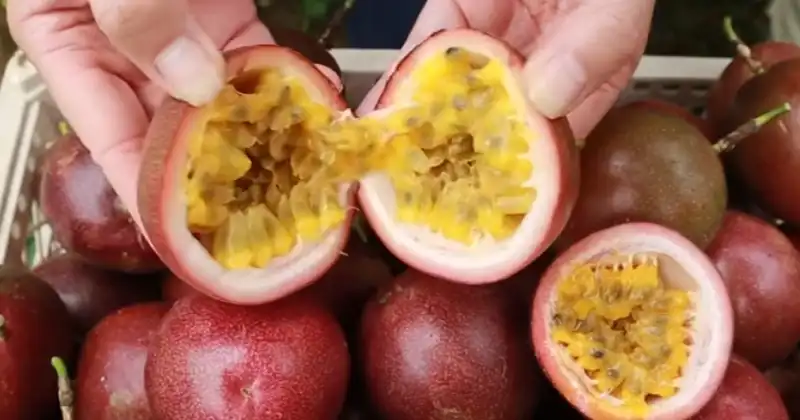How to Grow Passion Fruit at Home in Containers

Passion fruit, with its unique flavor and abundant health benefits, is a popular fruit that many people enjoy. While it is commonly grown in tropical regions, you can also successfully cultivate passion fruit at home, even if you don’t have a large yard. One of the most convenient methods is to grow it in containers. In this article, we will provide you with a comprehensive guide on how to grow passion fruit in containers at your own home.
1. Choose the Right Container
Selecting the appropriate container is the first step in growing passion fruit in a confined space. A large container with a minimum capacity of 10 gallons is recommended. This ensures the plant has enough room for root development and stability. The container should also have drainage holes to prevent waterlogging, which can damage the plant’s roots.
2. Soil Preparation
Passion fruit plants thrive in well-draining soil with a slightly acidic to neutral pH level (pH 6.5-7.0). You can create a suitable soil mix by combining equal parts of garden soil, compost, and perlite or sand to improve drainage. Make sure the soil is loose and crumbly to promote healthy root growth.
3. Choose the Right Variety
There are various passion fruit varieties, but the most commonly grown ones are Passiflora edulis and Passiflora ligularis. You should choose a variety that suits your climate and taste preferences. Passion fruit plants need warm weather to thrive, so consider your local climate when selecting a variety.
4. Planting the Seeds
Passion fruit can be grown from seeds, but it’s usually more reliable to start with a healthy seedling. However, if you want to grow passion fruit from seeds, follow these steps:
a. Soak the seeds in water for 24 hours to soften the hard seed coat. b. Plant the seeds about half an inch deep in the prepared soil. c. Keep the soil consistently moist until germination, which typically takes 2-4 weeks. d. Once the seedlings have grown a few inches, transplant them into the container.
5. Transplanting Seedlings
If you opt for seedlings, choose healthy and vigorous ones from a reputable nursery. Transplant them into your container once they have reached a height of 6-8 inches. Dig a hole in the soil, place the seedling in it, and cover the roots with soil. Water thoroughly after planting.
6. Providing Support
Passion fruit vines are vigorous climbers and need a trellis or support structure to grow vertically. Set up a trellis inside the container and guide the vines to grow along it. As the plant matures, you may need to tie the branches to the trellis to encourage upward growth.
7. Sunlight and Temperature
Passion fruit plants require full sun, which means they should receive at least 6-8 hours of direct sunlight daily. Place your container in a location where it can soak up the sun. Keep in mind that passion fruit prefers temperatures between 70°F and 85°F (21°C to 29°C) for optimal growth.
8. Watering and Fertilizing
Water your passion fruit plant regularly, keeping the soil consistently moist but not waterlogged. During the growing season, typically spring and summer, water more frequently. Reduce watering during the dormant period in the winter. To encourage fruit production, fertilize the plant with a balanced, slow-release fertilizer every 4-6 weeks during the growing season.
9. Pruning
Pruning your passion fruit plant is essential to maintain its health and encourage fruit production. Remove dead or diseased branches and trim the plant to control its size. Pruning also allows for better air circulation and sunlight penetration, which helps prevent diseases.
10. Pest and Disease Management
Keep an eye out for common pests like aphids, mealybugs, and scale insects. You can control these pests with insecticidal soap or neem oil. Additionally, passion fruit is susceptible to diseases like root rot and fungal infections. Ensure good drainage and proper ventilation to prevent these issues.
11. Harvesting
Passion fruit is ready to harvest when it changes color from green to purple, yellow, or dark red, depending on the variety. The fruit should be slightly wrinkled, indicating it’s ripe. Gently twist the fruit to remove it from the vine. Ripe passion fruit can be stored at room temperature for a few days or in the refrigerator for up to two weeks.
Conclusion
Growing passion fruit at home in containers is an enjoyable and rewarding gardening project. With the right container, soil, care, and attention to the needs of your passion fruit plant, you can enjoy the delicious fruits right from your own garden. Whether you’re an experienced gardener or a beginner, following these steps will help you successfully cultivate passion fruit in your home, no matter how limited your gardening space may be.



















